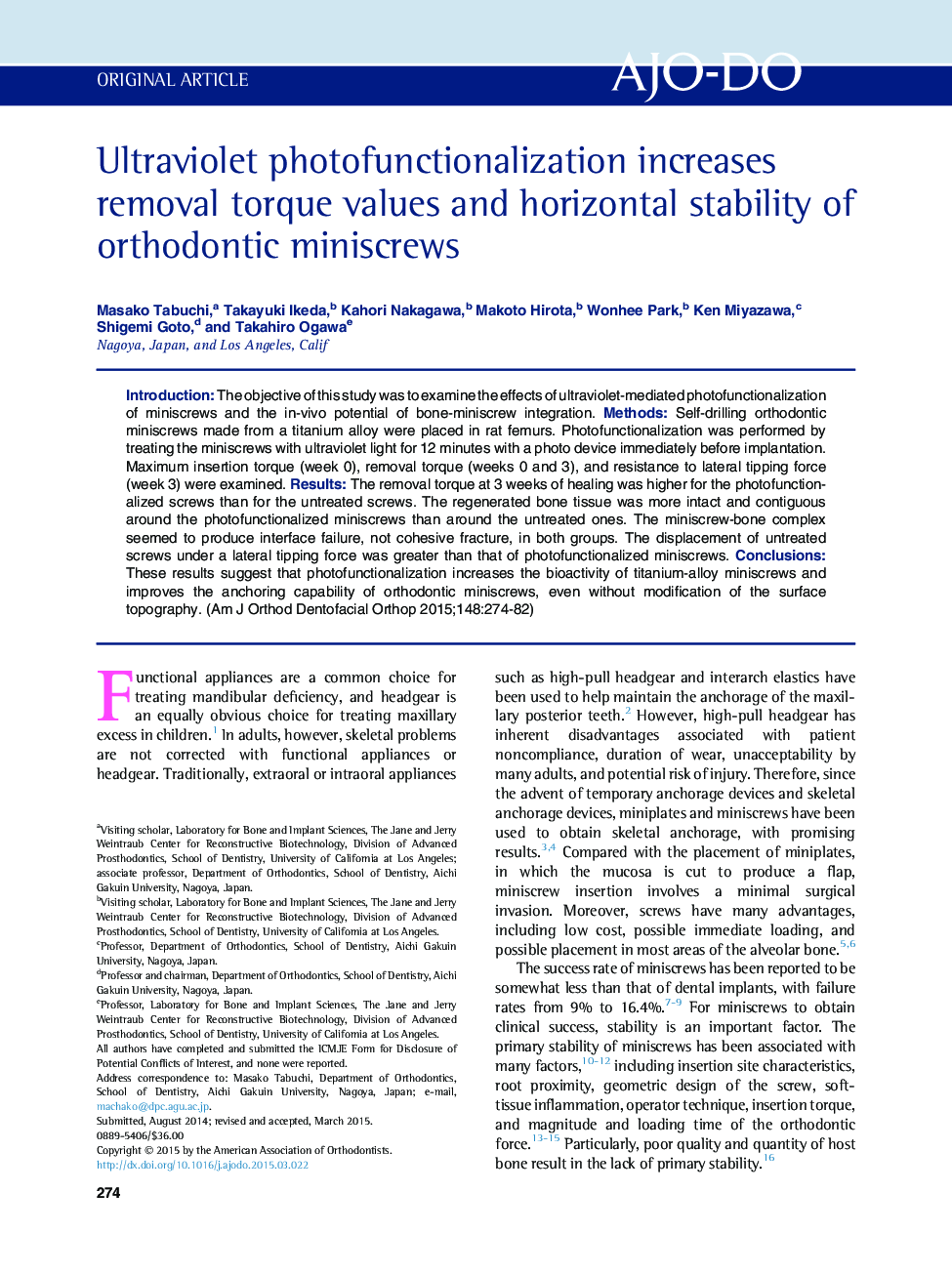| Article ID | Journal | Published Year | Pages | File Type |
|---|---|---|---|---|
| 3115609 | American Journal of Orthodontics and Dentofacial Orthopedics | 2015 | 9 Pages |
•Miniscrews were converted from hydrophobic to hydrophilic after photofunctionalization.•At week 3, the removal torque was higher for photofunctionalized screws than for untreated screws.•The miniscrew-bone complex showed interface failure, not cohesive fracture, in both groups.•The displacement of untreated screws was greater than that of photofunctionalized screws.
IntroductionThe objective of this study was to examine the effects of ultraviolet-mediated photofunctionalization of miniscrews and the in-vivo potential of bone-miniscrew integration.MethodsSelf-drilling orthodontic miniscrews made from a titanium alloy were placed in rat femurs. Photofunctionalization was performed by treating the miniscrews with ultraviolet light for 12 minutes with a photo device immediately before implantation. Maximum insertion torque (week 0), removal torque (weeks 0 and 3), and resistance to lateral tipping force (week 3) were examined.ResultsThe removal torque at 3 weeks of healing was higher for the photofunctionalized screws than for the untreated screws. The regenerated bone tissue was more intact and contiguous around the photofunctionalized miniscrews than around the untreated ones. The miniscrew-bone complex seemed to produce interface failure, not cohesive fracture, in both groups. The displacement of untreated screws under a lateral tipping force was greater than that of photofunctionalized miniscrews.ConclusionsThese results suggest that photofunctionalization increases the bioactivity of titanium-alloy miniscrews and improves the anchoring capability of orthodontic miniscrews, even without modification of the surface topography.
